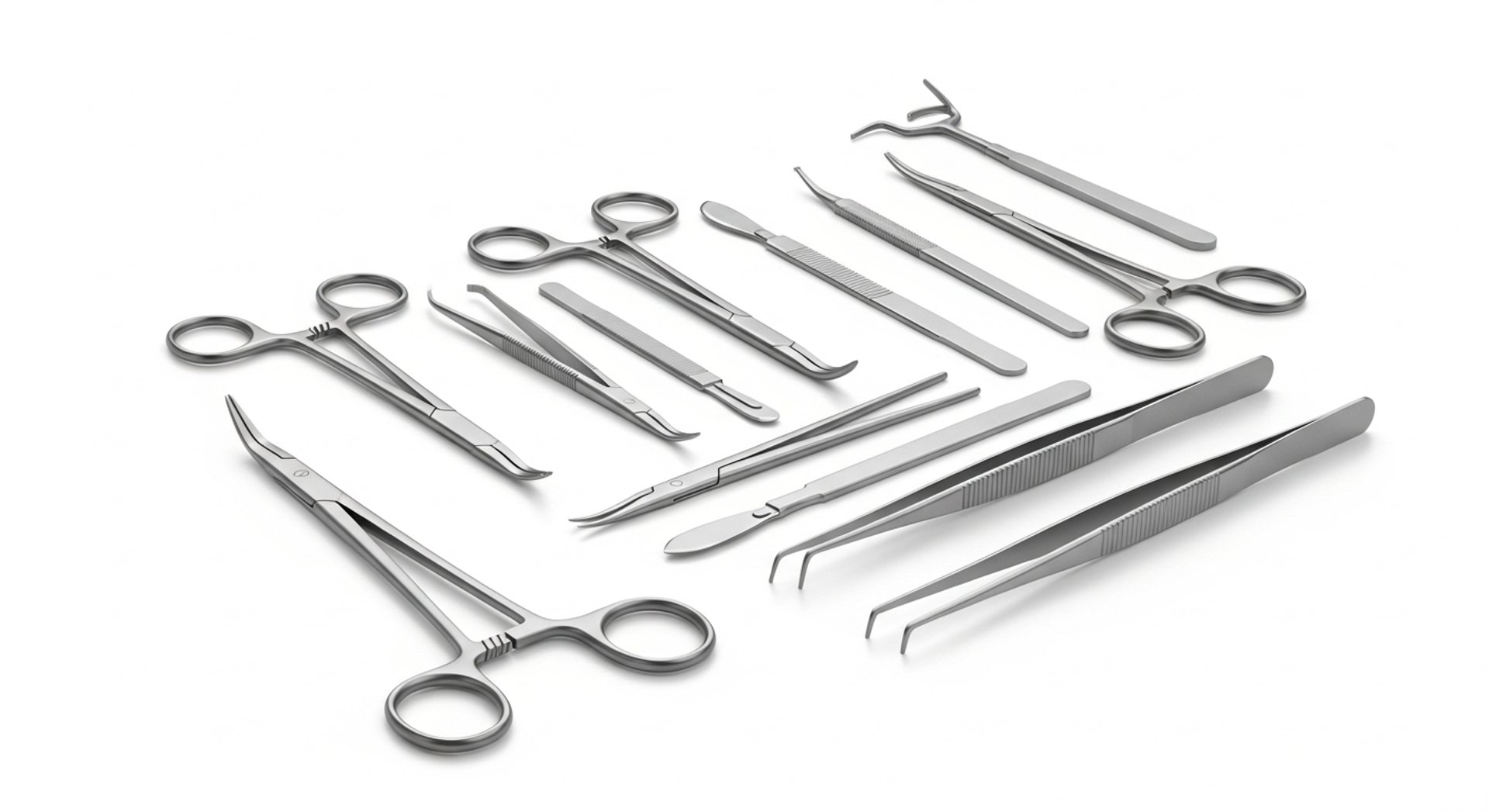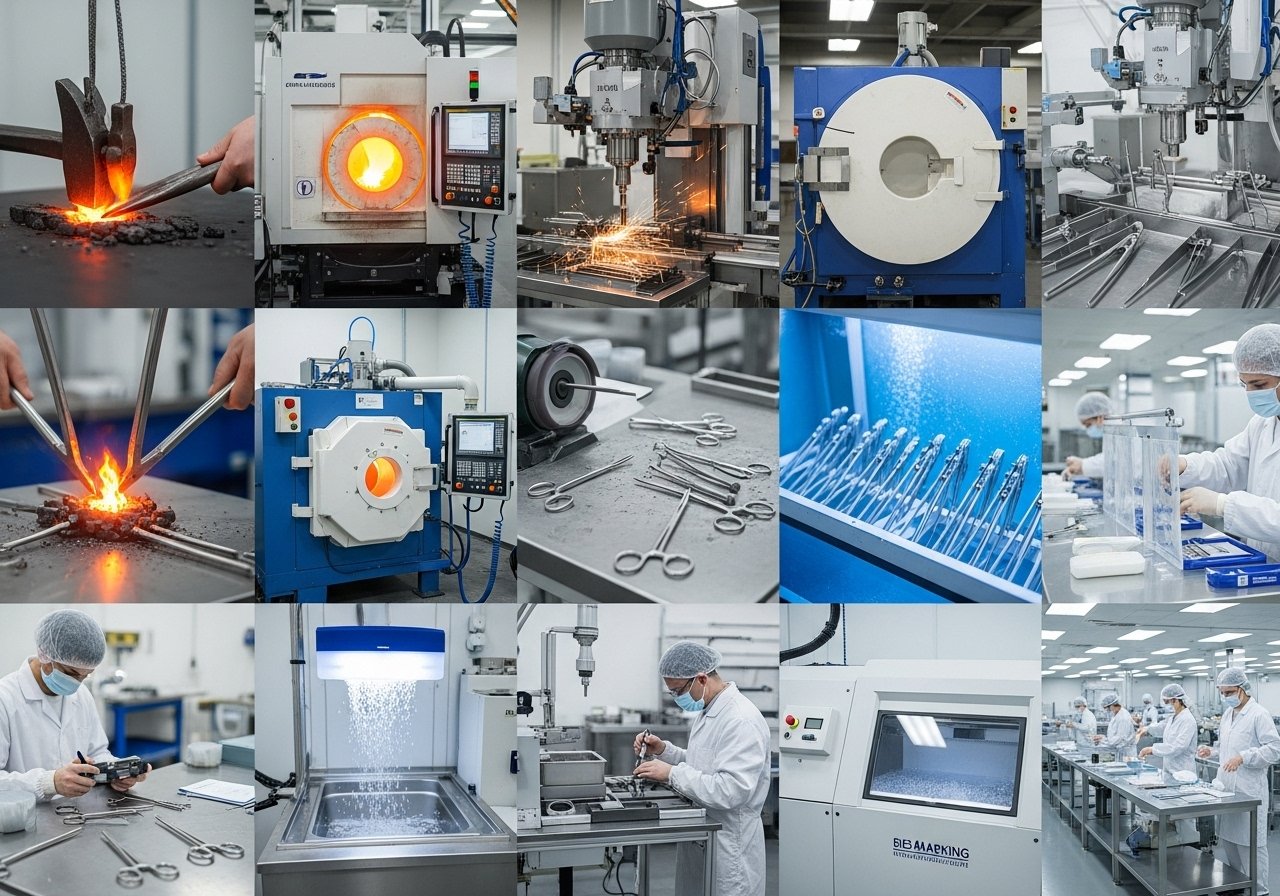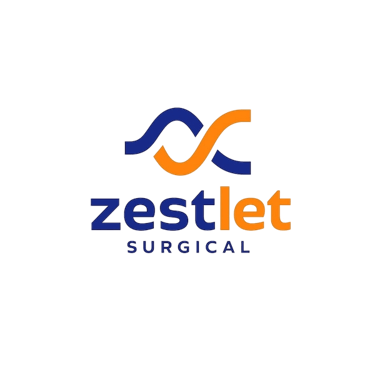
Manufacturing Process
Zestlet Surgical Instruments | Manufacturing Process
Manufacturing Process at Zestlet Surgical
Forging
At Zestlet Surgical, our instruments begin with precision drop forging using high-quality D-2 steel dies. Forgings then undergo ring trimming and acid pickling for a clean and refined base.
Annealing
Before annealing, each forged instrument is visually inspected for pattern accuracy and dimensional precision.
Annealing softens stainless steel for easier machining. Our forgings are treated in vacuum furnaces to prevent corrosion. This slow process involves heating pieces to a predetermined temperature and cooling them gradually, ensuring optimal flexibility for shaping and sizing in later stages.
Milling
Annealed forgings are then machined and milled to match design specifications. Advanced cutters create ratchets, serrations, box joints, and other functional details with precise accuracy.
Grinding
High-speed grinding wheels and belts remove excess material and bring each instrument to the correct size and tolerance.
Heat Treatment
Once shaped and aligned, instruments undergo heat treatment in advanced furnaces for hardening. Proper hardness is critical—too much can cause brittleness, too little affects functionality.
Hardness Testing
Every instrument is tested using diamond-tipped Rockwell hardness equipment to verify compliance with required standards.
Fitting & Assembly
Components are fitted together using screws or rivets for instruments like forceps and scissors. At this stage, ratchets, serrations, and teeth are aligned for perfect functionality and balance.
Electro-Polishing
To enhance smoothness and shine, instruments undergo electro-polishing, which removes burrs and improves corrosion resistance.
Final Polishing
Expert technicians perform the final shaping and smoothing using specialized polishing tools, ensuring a flawless finish.
Sand Blasting
Certain components, such as joints and ratchets, receive sand blasting for a matte finish that improves grip and prevents rust.
Sharp Edge Cleaning
Any sharp edges are carefully smoothed to prevent failures during surgical procedures.
Technical Inspection
Instruments are inspected for alignment, movement, and accuracy. Any non-compliant instrument is sent back for correction.
Passivation
To restore and strengthen the natural protective oxide layer, instruments undergo passivation, which removes iron particles and contaminants from the surface.
Final Polishing / Buffing
Depending on client requirements, instruments receive either a mirror polish, satin, or sand finish for a premium look and performance.
Ultrasonic Cleaning
A deep cleaning process removes all oils, residues, and particles using ultrasonic machines before the final inspection.
Final Inspection
Each instrument is hand-inspected individually for performance checks—testing cutting edges, grasping function, ratchet movement, and overall precision.
Laser Marking
Approved instruments are laser-engraved or stencil-marked for traceability and branding.
Color Coating (Optional)
If required, instruments are color-coated and cured in a controlled oven to ensure durability.
Packaging
Each instrument is manually cleaned and packaged in a controlled environment with strict humidity and temperature control. Personnel follow hygienic protocols, including gloves and head coverings, to ensure sterile packaging. Instruments are then sealed, labeled, and prepared for dispatch.


Checking the HRC of Instruments
After completing the vacuum heat treatment process at Zestlet Surgical, the next critical step is to verify whether the required steel hardness has been achieved. Proper hardness is essential for the durability and performance of surgical instruments and varies depending on the steel grade and heat treatment parameters. Only when the required HRC (Hardness Rockwell C) is confirmed, the production lot papers are stamped, and the HRC reading is documented on the lot tracking card for future traceability.
Digital Rockwell Hardness Tester
This advanced, automated machine provides an accurate HRC reading within seconds using the diamond indentation method, ensuring precision and efficiency.
Manual Rockwell Hardness Tester
The trusted standard in the industry—reliable, accurate, and fast—suitable for almost the entire range of instruments during HRC checks.
All instruments undergoing vacuum heat treatment are sample-checked for HRC before proceeding to the next production phase.
Welding Technologies in Surgical Instrument Manufacturing
Zestlet Surgical employs multiple welding technologies to ensure the highest strength and precision in its instruments. The choice of welding method depends on the material, design profile, and technical requirements of the instrument.
Spot Welding
An electric resistance welding process where two brass electrodes are used to fuse metal sheets by creating precise welding spots. Zestlet Surgical uses this method to join the tail ends of tweezers and tissue forceps.
Argon Welding
Used primarily for welding Tungsten Carbide (TC) rods onto stainless steel scissors, ensuring premium durability and exceptional weld strength.
Laser Welding
A state-of-the-art technology utilizing a pure laser source for heating and fusing components. Zestlet Surgical applies laser welding for both instrument repair and for high-precision assembly of multi-part instruments.
Induction Welding
A fascinating electromagnetic induction process used to bond Tungsten Carbide inserts to stainless steel instruments such as forceps and needle holders, delivering unmatched strength and precision.
Manufacturer & Exporter of
Dental and Surgical Instruments, Beauty Instruments, Diagnostic Devices, Hollowware and Hospital Furniture
Precision
Email:sales@zestletsurgical.com
Phone: +923294372020
© 2025. All rights reserved.
| Corporate
| Commitment
| Sustainability
| Production
| Contact US
Address: Chowk, opp. ZestletSurgical Factory, Kotli Behram, Sialkot, Punjab 51310
